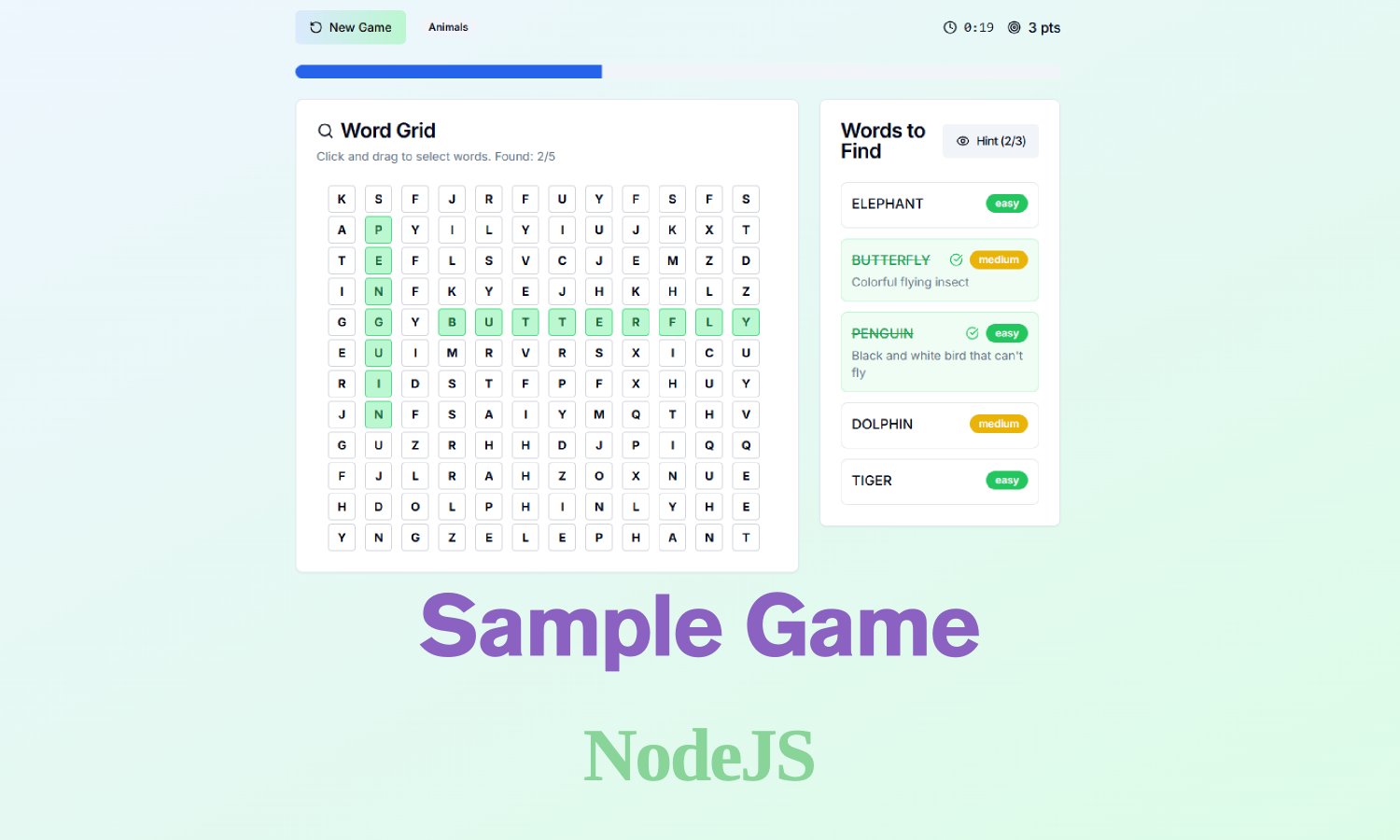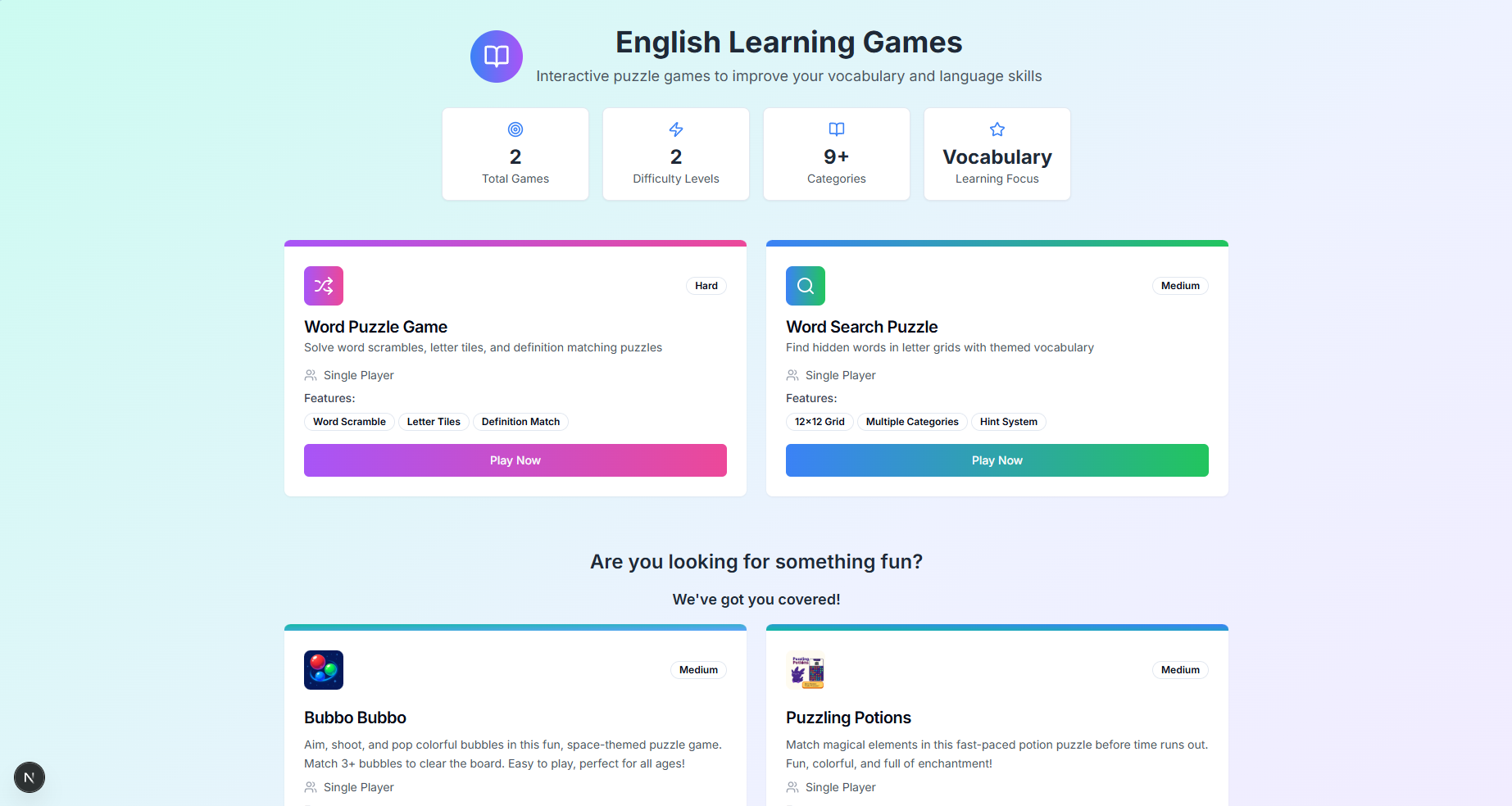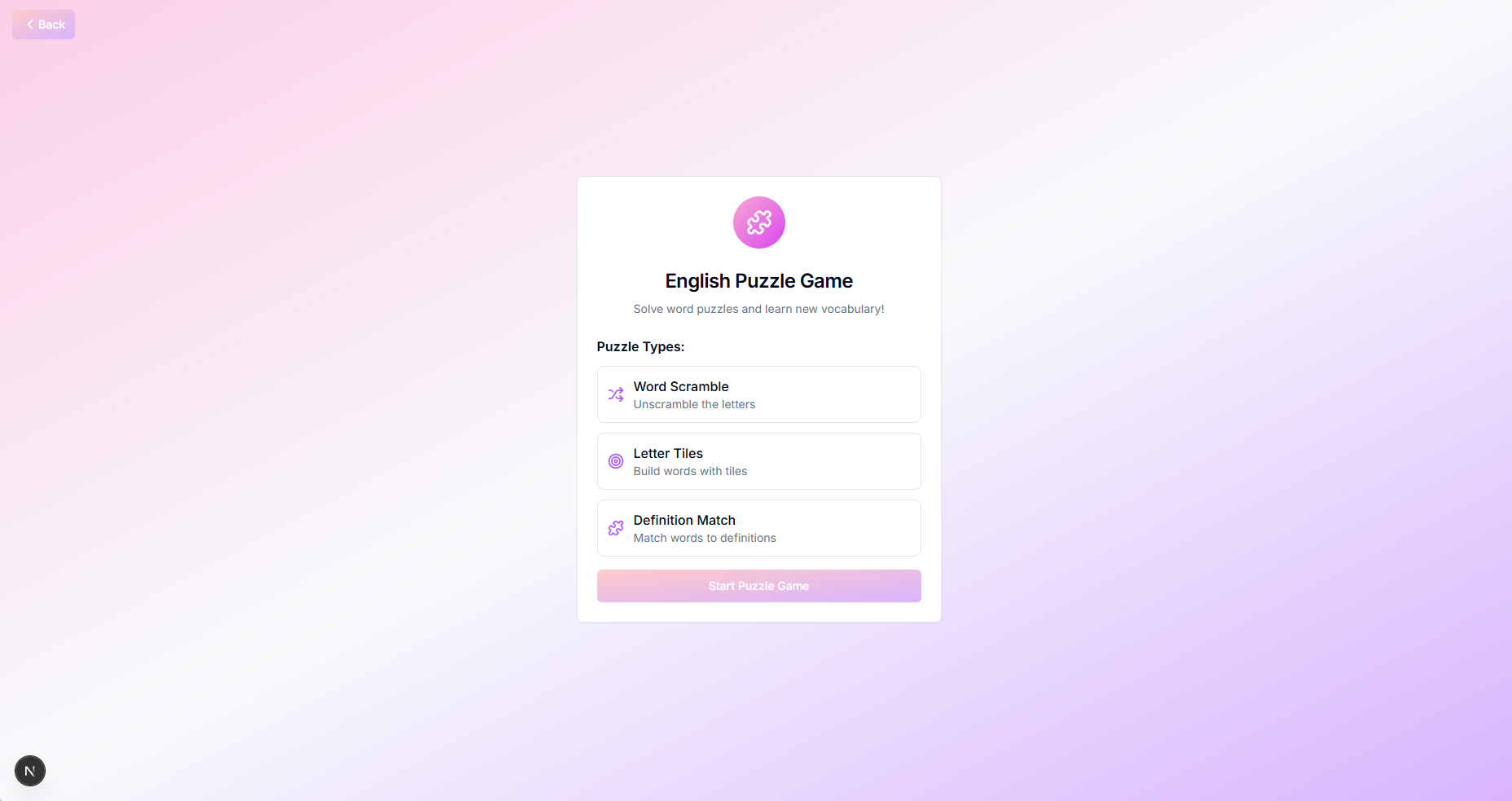Build Your Own English Learning Game Site with React & Node.js (Because Why Not?)
By hunglv, at: June 12, 2025, 5:18 p.m.
Estimated Reading Time: __READING_TIME__ minutes


Let’s face it: learning English from dusty textbooks is so 1998. In 2025, if your language app doesn’t sparkle, gamify, and throw in some tailwind-powered gradients, are you even trying?
This post walks you through building a web-based English learning platform that doubles as a game hub - using React.js, Next.js, and Node.js. It’s got puzzles, stats, and hopefully fewer bugs than your last group project.
All the source code can be found here
Step-by-Step Guide (aka: The Mildly Chaotic Journey)
1. Have a Brilliant Idea (Or… Any Idea)
Decide what kind of games you’re making. Word Puzzle? Word Search? “Guess What I Just Typed Wrong?” Get your UX sorted. Make sure it doesn’t look like it was made in Paint.
2. Fire Up Your Frontend Like a Pro
Use create-next-app. Yes, it’s 2025, and we still love boilerplate. Say yes to TypeScript if you’re feeling fancy. Toss in Tailwind CSS and shadcn/ui if you want your app to actually look good.
3. Make It Interactive, or at Least Clickable
Break down your games into React components:
-
WordPuzzle.tsx
-
BubbleGame.tsx
-
IDidn’tNameThisWell.tsx
4. Backend Optional (Like Ketchup on Eggs)
Want to save user scores, vocab, or accounts? Spin up a Node.js/Express server. If not, just pretend your frontend is all-powerful. Confidence is key.
5. Deploy and Pretend Nothing Will Break
Vercel or Render - click a few buttons, and voilà! Your half-tested code is live. Now wait for feedback and act surprised when something doesn’t work.
Suggested Folder Structure (Because Chaos Isn’t Cute)
/src
/components
/games
/api (if you're brave)
/utils
Stack We Swear By
-
React.js / Next.js 14: Because we like shiny new routers.
-
Tailwind CSS: No more writing margin-left: 12px ever again.
-
shadcn/ui + Lucide Icons: Because you deserve aesthetic buttons.
-
Node.js + Express: Optional, like leg day.
-
Vercel: Because Git push → deployed is magical.
Core Features (That May or May Not Be Bug-Free)
-
Real-time vocab games (Word Puzzle, Word Search, Bubble Trouble…)
-
Responsive UI so it works on Grandma’s iPad
-
Scoreboards to flex how many words you know
-
Super serious educational value… wrapped in fun


The Good Stuff
-
Actually fun to use
-
Expandable (just like your backlog)
-
Works on desktop and mobile
-
Instant feedback means learners don’t have to cry alone
Things That Still Suck
-
No login = no saved scores. Oops.
-
Can’t track individual vocab progress yet
-
i18n? What’s that? (Just kidding, it’s “coming soon”)
Future Plans (Once You Have Coffee and Motivation)
-
Firebase/Auth.js so you can finally stop faking user IDs
-
AI Tutor Integration: because your app needs a smart sidekick
-
Make it a PWA (yes, offline support like it’s 2010 again)
-
Learning dashboard, see your progress, feel good, procrastinate less
“Learning through games isn’t just a method - it’s a revolution. Also, it’s more fun than flashcards.”
So go ahead, build your own English-learning playground. Make it, break it, ship it. The future of education is interactive, colorful, and made by you.
With affection and caffeine.
All the source code can be found here


![[Useful Site Review] Lovable.dev](/media/filer_public_thumbnails/filer_public/e5/60/e560cbce-671a-45b3-b5ad-9d473986f40d/useful_site_review__lovabledev_1.png__400x240_crop_subsampling-2_upscale.png)


